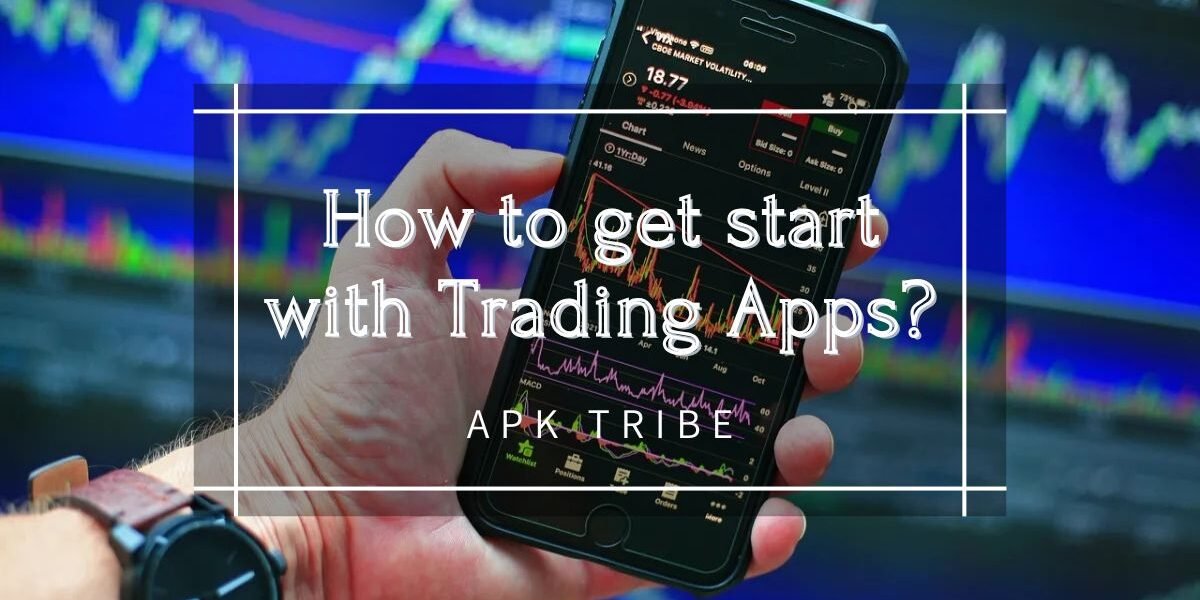How to get start with Trading Apps?
Trading apps are desktop or mobile programs made to make it easier to buy, trade, and manage financial assets like commodities, stocks, bonds, cryptocurrencies, and currency. Users may access financial markets, examine data, make deals, and keep an eye on their investment portfolios in real time with the help of these apps.
Key Features of Trading Apps:
Trading apps come with a number of features that are intended to make trading easy, effective, and accessible. Users can purchase, trade, and keep an eye on assets including stocks, cryptocurrencies, FX, and commodities thanks to their real-time access to financial markets. Usually, these applications include with tools for examining market movements, like technical indicators, historical data, and interactive charts. While instructional services like tutorials and news updates assist traders in making well-informed selections, portfolio management capabilities allow users to monitor their holdings and assess performance. Additionally, a lot of trading apps provide customization features like price alerts and watchlist creation. A crucial element is security, with features like two-factor authentication and encryption guaranteeing the security of user accounts.
From selecting the appropriate app to making your first transaction, there are a few easy stages involved in getting started with trading apps. Here’s a starting point guide:
Understand Your Goals
- Prior to entering the trading business, it is crucial to establish your goals. Knowing your objectives will help you choose the right trading app and affect how you approach the markets. For example, if you want to invest for long-term growth, such retirement planning or gradually increasing your wealth, you might want to concentrate on applications that provide a wide variety of assets, such as stocks, bonds, and exchange-traded funds (ETFs).
- Usually, these platforms include resources for portfolio management, long-term investment tracking, and research.
- If you’re interested in day trading, where you purchase and sell assets within a single trading day to capitalize on short-term price swings, you’ll need a trading software that offers comprehensive charting capabilities, real-time market data, and swift order execution. Because frequent trading might result in expenses, day trading frequently necessitates apps with fast connectivity and minimal commissions.
For individuals who are interested in cryptocurrency, there are apps specifically made for maintaining, purchasing, and selling digital assets such as Ethereum and Bitcoin. Features like direct blockchain network integration and crypto wallet management are provided by these systems.
In order to learn how to get started with trading apps, you must first understand your trading goals. By matching your objectives with the appropriate app, you position yourself for market success. Determining your objectives is essential to successfully how to get started with trading apps, regardless of your level of experience.
The 5 Most Popular Trading Apps
Trading applications have completely changed how people trade and invest in the fast-paced digital world of today.
When you are looking into how to get started with trading apps, picking the appropriate platform is crucial to achieving your trading objectives. These are five of the most widely used trading applications, each of which serves a distinct market niche:
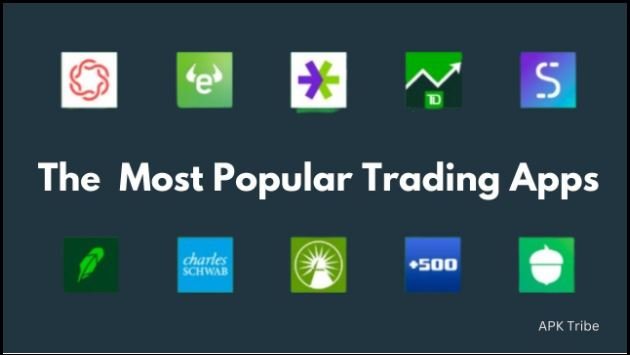
1. Robinhood
Robinhood is well known for its commission-free trading and easy-to-use interface. For novices wishing to invest in stocks, ETFs, options, and cryptocurrency, it is perfect. The software offers the necessary resources to get going without overburdening novices with intricate functionality. It is better suitable for inexperienced traders or those who prioritize simplicity because it lacks sophisticated research tools.
2. EToro
EToro is a well-known stock, cryptocurrency, and FX trading site. One of its most notable features is “social trading,” which lets users watch and replicate the moves of profitable investors. This makes it an excellent choice for novices who wish to pick the brains of seasoned traders. Additionally, the program provides a virtual trading account so users can experiment before making real money investments.
3. TD Ameritrade
Advanced traders like TD Ameritrade’s Thinkorswim software. It offers real-time market data, customisable charts, and comprehensive research tools. The software offers educational materials to help novices learn the ropes, even if it appeals to seasoned investors. If you are unsure about how to begin using trading applications, TD Ameritrade is a fantastic option for learning as you invest.
4. Webull
Another commission-free trading program is Webull, which has sophisticated features and tools like customisable charts, technical indicators, and in-depth analysis. For traders who require more than basic capability, it is perfect for intermediate to advanced traders. Webull appeals to people who desire greater flexibility in their trading schedule because it offers access to extended trading hours.
5. Coinbase
One of the most reliable trading applications for cryptocurrency aficionados is Coinbase. It provides a simple platform for maintaining, purchasing, and selling virtual currencies such as Ethereum and Bitcoin. For anyone interested in cryptocurrency trading, Coinbase is a great place to start thanks to features like an integrated wallet and educational materials.
You can select the software that best suits your objectives by being aware of its features and advantages. One of the most important steps in how to get started with trading apps, choosing the appropriate platform lays the groundwork for profitable trading or investment.
Sign Up and Verify Your Account
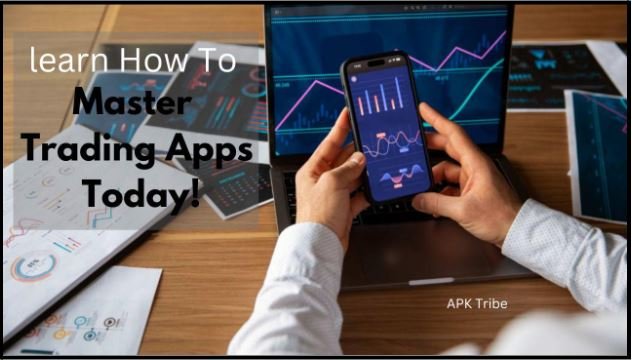
Learn the Basics
- Signing up and verifying your account is the next step after selecting a trading app that fits your objectives. Although simple, this procedure is necessary to guarantee a safe and legal trade environment. The first step in learning “how to get started with trading apps” is correctly creating your account.
- Start by downloading the trading app from a reliable website, like Google Play or the App Store. Create an account by entering your personal information, such as your name, address, birthdate, and contact information, after installing the program. In order to avoid fraud and maintain account security, this information must adhere to regulatory standards, such as Know Your Customer (KYC) requirements.
Next, confirm who you are. In order to verify your address, the majority of trading applications need you to upload a government-issued ID, such as a driver’s license or passport, and occasionally a utility bill or bank statement. This measure helps to preserve a safe trading environment by guaranteeing that only authorized users can access the platform.
Lastly, connect your payment method or bank account to make deposits and withdrawals easier. Since this is how you will finance your trading account and access your profits, double-check the information to prevent mistakes. You will be well on your way to learning “how to get started with trading apps” and starting your trading career with assurance if you follow these instructions.
Prior to engaging in actual trading, it is essential to invest time in studying the fundamentals of trading apps. You can reduce risks and make well-informed judgments if you have a firm grasp of the app’s capabilities, functions, and layout.
To get acquainted with the app’s layout, start by navigating it. List important features including trading charts, order placing options, market analysis tools, and portfolio tracking. To assist new users in becoming acquainted with the platform, a lot of apps offer walkthroughs or lessons. Use these tools to learn how to properly execute trades, place stop-loss orders, and keep an eye on market movements.
Use the app’s paper trading or demo account features to practice trading without having to risk real money. Through this simulation, you can experiment with various tactics, comprehend market dynamics, and hone your decision-making abilities. It is a risk-free method of learning how transactions are carried out and how gains and losses are determined.
Putting in the time to learn the fundamentals will provide you a solid foundation in “how to get started with trading apps.” When you start trading with real money, this preparation not only improves your trading abilities but also lowers the possibility of expensive errors.
Fund Your Account
Funding your account is the next step in “how to get started with trading apps” after creating and validating your trading account. Although depositing money is a simple procedure, it is crucial to proceed cautiously and sensibly.
The majority of trading applications allow users to fund their accounts using a variety of methods, such as digital wallets like PayPal, debit cards, or bank accounts. To prevent problems or delays, make sure the account data you enter are correct and select the option that best fits your needs. For methodical investing, you may also create recurring deposits using a lot of programs.
Start with a sum that you can afford to lose when you first fund your account. Trading is risky, and losses can result from market swings, particularly for novices. You can gain experience without risking large sums of money by beginning small.
It is also a good idea to learn about any fees related to withdrawals or deposits. Make sure to check these data in advance because certain applications may have minimum deposit requirements or modest transaction fees.
You can confidently finish this step in “how to get started with trading apps” and start your trading journey with a stable financial foundation by adopting a cautious and knowledgeable approach.
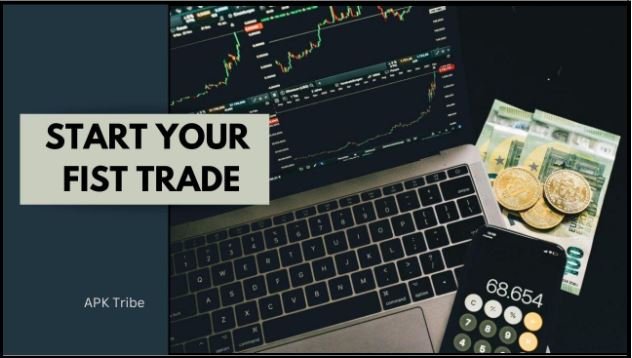
Do Your Research
Research is an essential step in learning “how to get started with trading apps” because it reduces risks and helps you make well-informed judgments. Spend some time researching the markets and comprehending the elements that affect asset prices before making any trades. Being knowledgeable is essential for success whether you are trading forex, equities, or cryptocurrency.
Fundamental analysis is an excellent technique for novices to establish a solid foundation. This include assessing a company’s financial status, comprehending economic indicators, and examining market trends. You can find long-term investing opportunities by keeping an eye on the larger picture. Reading quarterly reports, financial news, and expert opinions, for example, might give you important information about how the market is moving.
Technical analysis is a technique used by seasoned traders to forecast future market trends by examining price charts, patterns, and indications. Trading entry and exit points can be determined with the use of tools such as moving averages, RSI, and candlestick patterns. In order to facilitate both technical and fundamental study, the majority of trading apps come with integrated analysis tools.
You can acquire the abilities required to make strategic decisions by investing time in study. A crucial component of “how to get started with trading apps,” understanding market dynamics positions you for a profitable and knowledgeable trading career.
Set a Trading Strategy
Choosing a trading strategy that fits your objectives and risk tolerance is one of the most crucial aspects in learning how to use trading applications. Making consistent, well-informed decisions and navigating market volatility are made easier with a well-thought-out approach.
There are a number of popular trading techniques to think about. The goal of long-term investment is to take advantage of the market’s slow growth by purchasing and keeping assets like stocks or exchange-traded funds (ETFs) for years. This approach is appropriate for people with long-term financial objectives and a low risk tolerance.
Contrarily, swing trading entails keeping assets for a few days or weeks in order to take advantage of medium-term price fluctuations. It calls for fundamental technical analysis abilities and consistent market monitoring.
Day trading and scalping are choices for individuals who are interested in high-frequency trading. While scalping focuses on making multiple tiny profits from quick deals, day trading entails purchasing and selling assets inside a single trading day. Both tactics require a high tolerance for risk and sophisticated technical analysis.
No matter the plan, risk management is crucial. Establish clear guidelines, such as utilizing stop-loss orders to limit possible losses, and decide how much capital you will invest in each trade.
You can develop a disciplined approach to trading success and establish confidence in “how to get started with trading apps” by selecting a strategy that aligns with your objectives and available resources.
Place Your First Trade
The next stage in how to get started with trading apps is to make your first transaction after you have been acquainted with the app and established your strategy. Although it can be an exciting process, cautious planning is necessary to make sure you are making wise choices.
Choose the asset you want to trade first, like stocks, cryptocurrencies, or forex pairs.
Examine the asset in detail, taking into account past performance, current market patterns, and any news that could affect its price.
Once you feel secure, choose the trade type you wish to execute: a sell order if you anticipate a decrease in the asset’s price, or a purchase order if you think it will rise.
Two primary order types are available in the majority of trading apps. You can instantly execute a trade at the current market price using a market order. This works best for highly liquid assets. A limit order, on the other hand, enables you to specify a price at which you wish to purchase or sell the item. Only when the market hits the price you have set will the trade go through.
Before confirming, check your trade details one more time. You will build confidence and learn more about “how to get started with trading apps” by beginning slowly and methodically, which will pave the way for long-term success.
Monitor and Adjust
A crucial step in how to get started with trading apps is learning to monitor and adjust your trades effectively. Trading is not a “set it and forget it” activity; success requires continuous attention to both your portfolio and market conditions.
Start by going over your deals on a regular basis. The majority of trading apps offer performance tracking features including charts, notifications, and profit/loss measures.
To determine if your trades are helping you achieve your objectives, use these features. It might be time to review your approach or modify your risk management guidelines if you observe persistent underperformance.
It is equally critical to keep up with the market as a whole.Economic events, corporate news, or geopolitical developments can cause market conditions to change quickly. You may better predict changes that may impact your assets by staying up to date on pertinent news and trends. To make this simpler, a lot of trading apps come with integrated news feeds and analysis features.
As necessary, modify your approach. For example, you may lower transaction sizes or tighten your stop-loss settings if market volatility rises.
On the other hand, you might take on a little bit more risk to seize opportunities while things are stable.
Through consistent observation and modification, you will hone your abilities and enhance your comprehension of “how to get started with trading apps,” opening the door to sustained success.
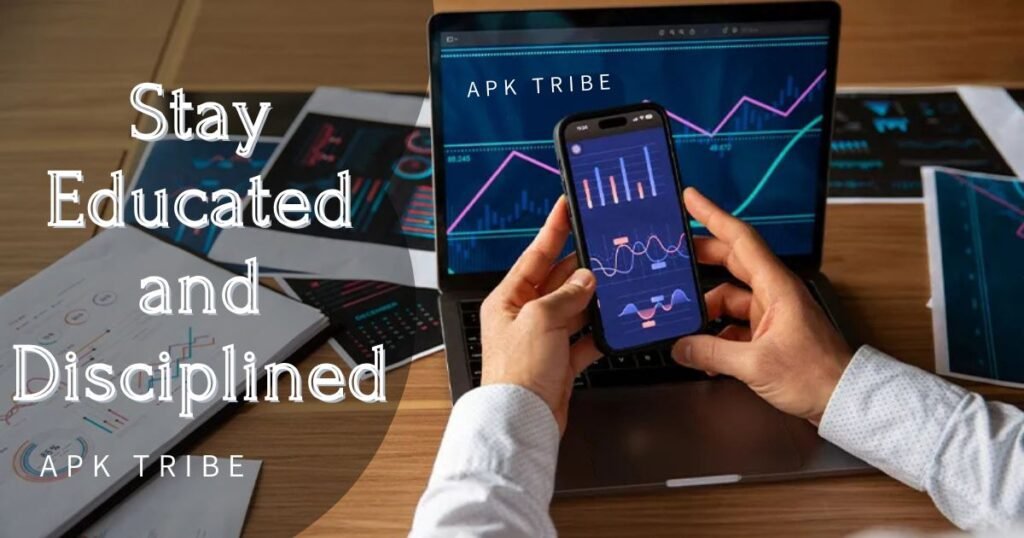
Stay Educated and Disciplined
Making a commitment to lifelong learning is one of the most crucial components of how to get started with trading apps. Being informed will help you adjust to new tactics, tools, and market conditions in the ever-changing world of trading.
The majority of trading apps provide a range of learning materials, including articles, webinars, tutorials, and even real-time market news updates. You can improve your trading skills and expand your knowledge base with the help of these resources.
These resources can help you keep ahead of the curve whether you are studying the fundamentals of technical analysis or investigating more complex trading techniques.
Keeping your trading strategy disciplined is as crucial. Fear or greed are examples of emotional decisions that might result in rash decisions and large losses. It is critical to adhere to your trading strategy, your risk management guidelines, and refrain from making decisions based on fleeting feelings. You may maintain
concentration by establishing a clear plan and establishing reasonable objectives.
You will continue to develop as a trader if you maintain your discipline and regularly use the learning tools your app offers.
This strategy will be essential for comprehending “how to get started with trading apps” and guaranteeing sustained market success.

